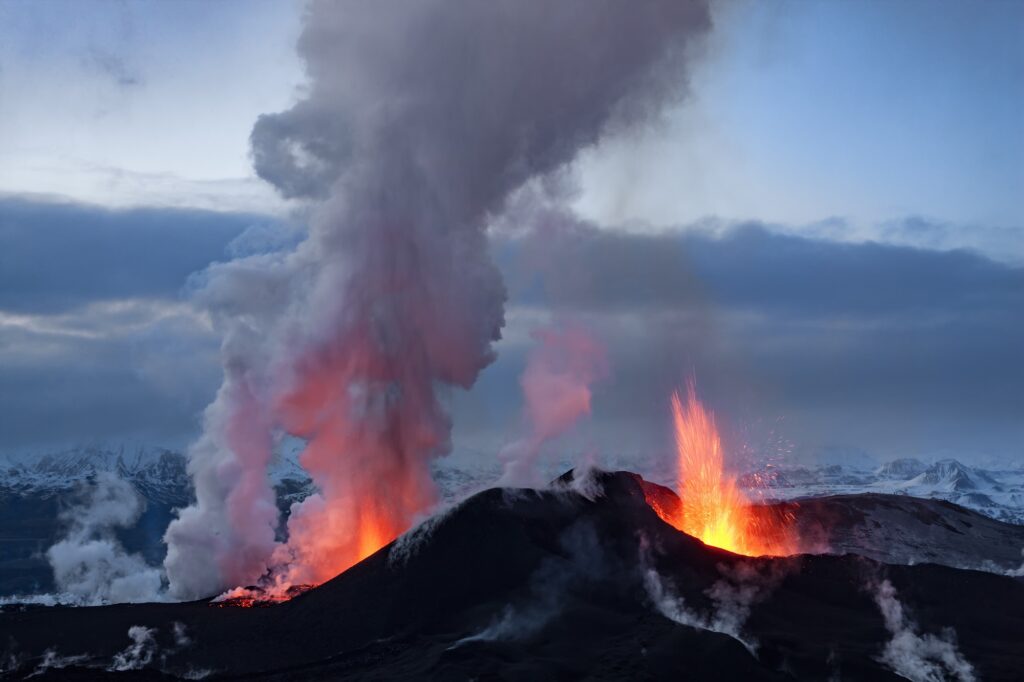As anticipation builds in Iceland, authorities are keeping a vigilant eye on the possibility of an imminent volcanic eruption. The Iceland Meteorological Office (IMO) has issued a warning, highlighting that magma may have risen very close to the Earth’s surface. The situation is reminiscent of the lead-up to a previous eruption in 2021, leaving both locals and experts in suspense.
Kristín Jónsdóttir, head of department at the Icelandic Meteorological Office, suggests that people will need to remain in suspense for the next few days to witness how events unfold. The stakes are high, as authorities fear they might have as little as 30 minutes’ notice before a volcanic eruption takes place.
The latest signs of an impending eruption include the detection of magmatic gas in a borehole in Svartsengi, signaling a possible eruption of the Fagradalsfjall volcano in the coming days. The town of Grindavik faces the most significant risk in this scenario, and nearly 4,000 residents were evacuated over the weekend in anticipation of potential danger.
This situation inevitably raises concerns about air travel, given Iceland’s crucial position between Europe and North America. In response, Iceland’s aviation alert has been elevated to orange, indicating an increased risk of a volcanic eruption.
Historically, volcanic eruptions have been a significant hazard to air travel due to the release of ash into the atmosphere. Volcanic ash can pose severe threats to aircraft, including engine failure, damage to flight control systems, and reduced visibility. The eruption of the Eyjafjallajokull volcano in April 2010 serves as a haunting reminder of these risks, as it led to more than 100,000 flight cancellations over an eight-day period.
The Eyjafjallajokull eruption, in particular, had a substantial economic impact, resulting in estimated losses of approximately $3 billion. This catastrophe disrupted air travel between Europe and North America, affecting 7 million passengers and dealing a severe blow to the global economy. Airlines alone suffered losses of about $1.7 billion in revenue.
However, the situation surrounding the potential eruption of the Fagradalsfjall volcano is notably different from that of Eyjafjallajokull in 2010. In the previous eruption, a glacier atop the volcano caused rapid cooling of the lava, resulting in the creation of tiny, ash-carrying particles propelled into the atmosphere by steam. These particles were then carried toward Europe by the wind.
In contrast, the current scenario presents a different set of circumstances, reducing the likelihood of a similar air travel crisis. Over the past three years, three eruptions have occurred on the Reykjanes Peninsula, without any significant impact on air travel. Additionally, the European Aviation Safety Agency (EASA) has enhanced its preparedness for major volcanic ash events, ready to collaborate with other aviation entities to assess the impact on aviation and provide recommendations accordingly.
Despite the rising tension surrounding the impending eruption, authorities have not issued a “no-go” travel warning for Iceland. Airlines and travel companies continue to operate normally, with travelers who cancel their bookings not necessarily entitled to refunds, as long as the Foreign Office guidance remains advisory. It’s essential for travelers to review their insurance policies for coverage related to natural disasters like volcanic eruptions.
While the potential eruption of the Fagradalsfjall volcano does raise concerns for air travel, experts believe that lessons learned from the Eyjafjallajokull eruption in 2010 and the differences in circumstances surrounding this volcano eruption could lead to a less severe impact on aviation.
As the situation develops and authorities closely monitor volcanic activity, travelers, airlines, and aviation agencies will be keeping a watchful eye on the skies over Iceland and Europe. The story of Iceland’s imminent volcanic eruption continues to unfold, with its ultimate impact on air travel still uncertain.

